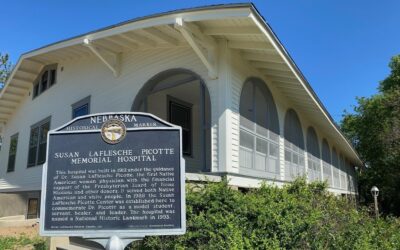Unique sights between Omaha and Sioux City were described in the morning edition of the Omaha Daily Bee, on July 7, 1874. A letter writer, identified only as “RANGER,” [the pen name of John Harwood Pierce] described a Dixon County area that had attracted the attention of Lewis and Clark in 1804 and that of later sightseers and amateur geologists.
RANGER visited what he called the “Ionia volcana,” about half a mile from the village of Ionia. “Mr. S. T. Hill, who is the general business man of this portion of the country, kindly volunteered to act as guide. He took us in his skiff and rowed up the [Missouri] river to a bank towering up from the water’s edge full two hundred feet. There, on a narrrow plateau about half way up the bluff, we saw and smelt the sulphurous vapor which indicated the spot we sought. On arriving at the plateau we saw several fissures in the clay, from which issued vapor so hot that the ground in the vicinity was too warm to rest the hand on comfortably. On listening, we could hear strange sounds under our feet, like the distant roar of a blast furnace.
“Mr. Hill said that it was considerably hotter than when he was there a few days before, and that the heat has been continuously increasing. Some time before this ‘hot-hole’ was discovered a vast land slide occurred, which is supported by the internal fires which have now found a breathing place.”
RANGER also called attention to fossil finds in the area: “After examining the embryo Aetna our attention was called to the bluff, which is of slate and hard clay, with occasional gypsum formation and is full of petrifaction of all kinds. Half way up the bluff we dug out of the slate a petrified backbone, showing every veterbral [sic] and not scarred or injured in the least, and immediately along side we found imbedded in soft rock a handful of shell fish, and there is no scarcity to these petrifactions, but the bluffs is literally full of them. It was from one of these bluffs that Mr. Joseph Brewer dug out the wonderful petrified monster, which is now on its travels making a fortune for some enterprising side showman.”
Part of the site of RANGER’s “Ionia volcana” collapsed into the Missouri River in 1877. By 1882 historian A. T. Andreas reported that little of interest remained there.



